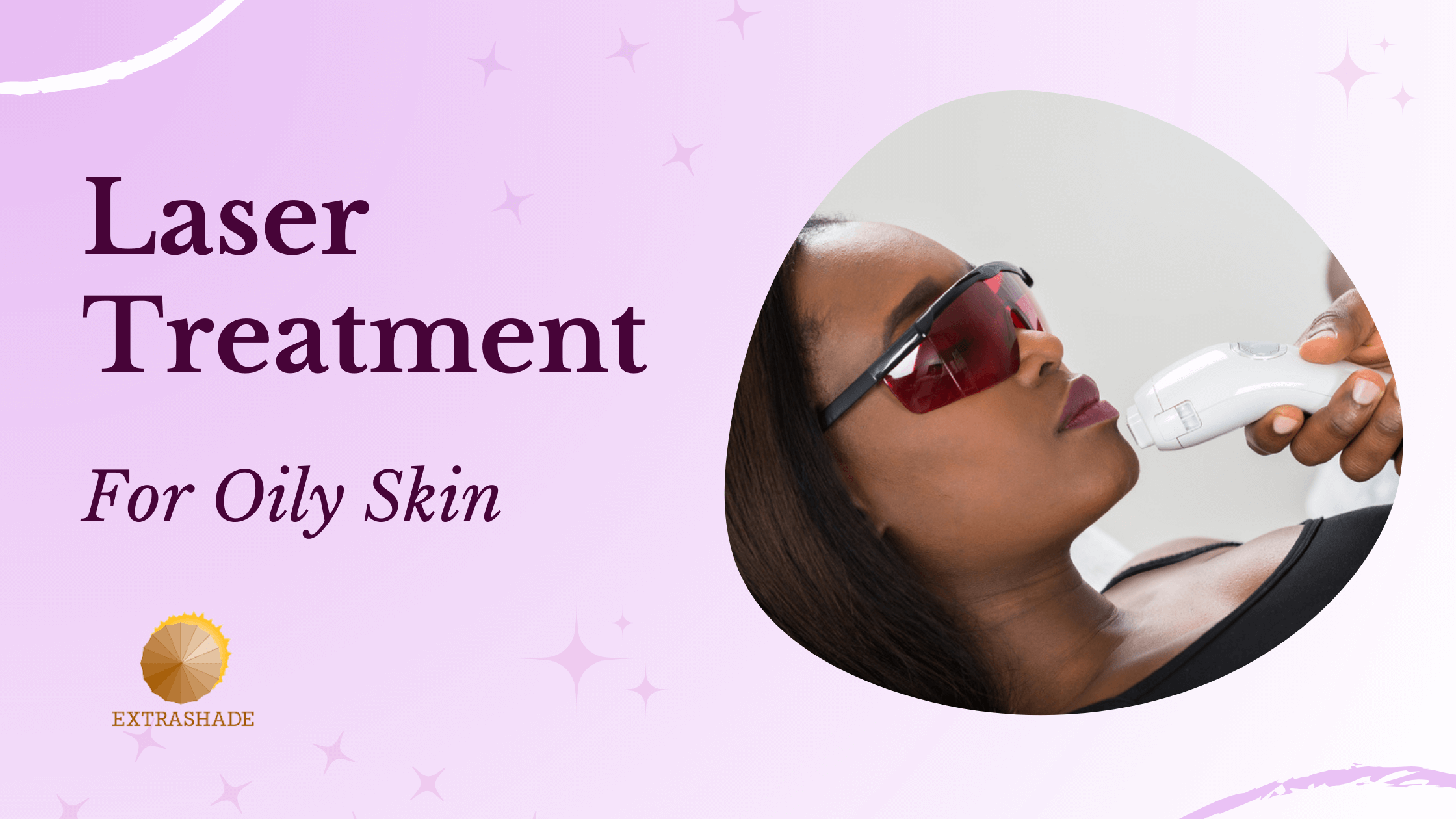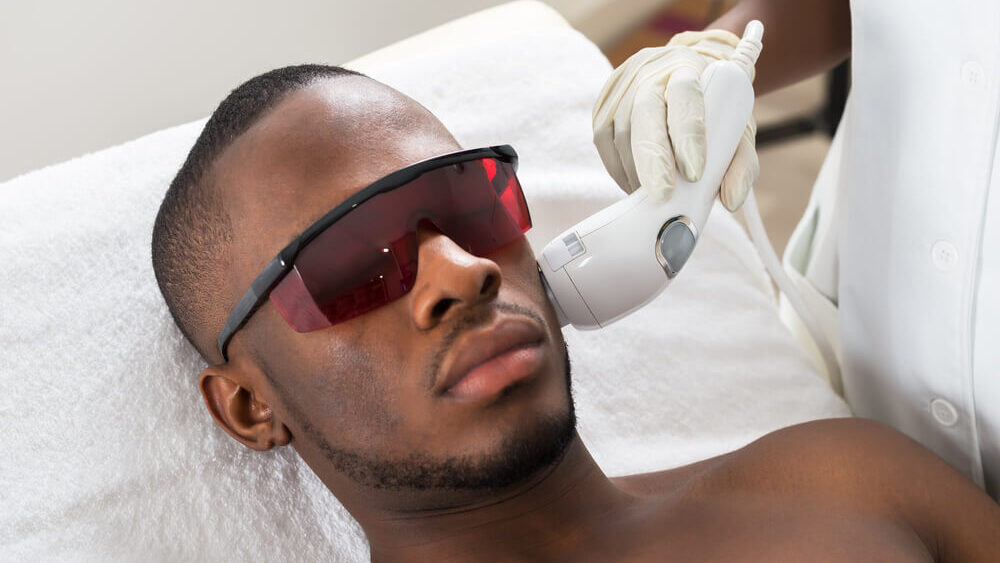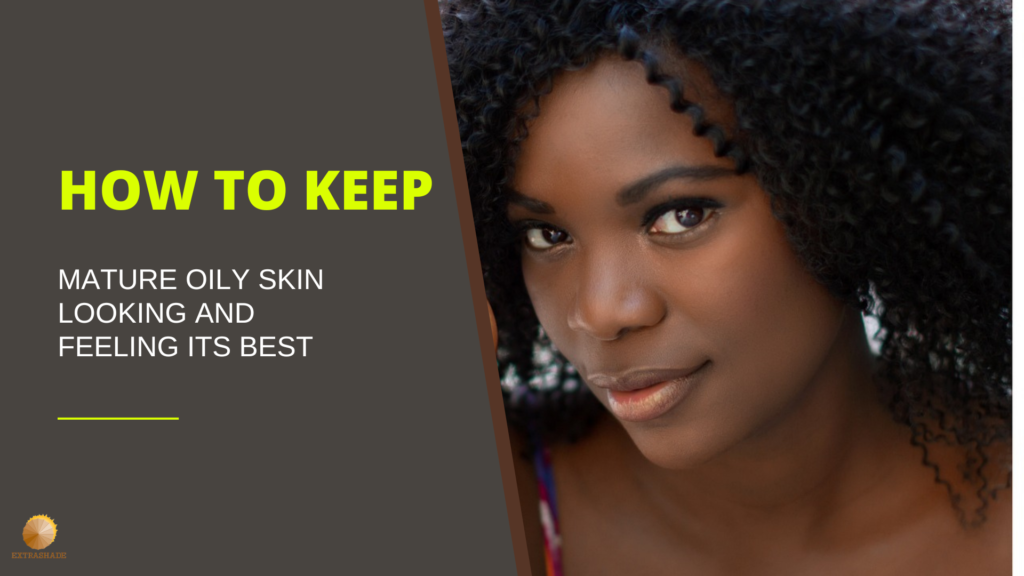Are you frustrated by constant shine, stubborn breakouts, and enlarged pores that just won’t budge? Oily skin can be more than a cosmetic concern — it affects your confidence, appearance, and daily comfort. Traditional skincare products often offer only temporary relief, leaving you in a relentless cycle of trial and error.
But what if you could finally break free from the endless search for solutions? Laser treatments are redefining how oily skin is managed, targeting the root causes beneath the surface and delivering visible, lasting clarity. No more blotting sheets, aggressive scrubs, or short-lived mattifying products — just smooth, balanced skin you can feel confident about.
In this article, we will walk you through all the bells and whistles of laser treatment for oily skin. So, without further ado, let’s dig deeper.
Laser Treatment for oily skin – Understanding the problem of oily skin
Excess sebum production, which contributes to the skin’s protection and moisture, is associated with oily skin. However, excessive sebum production can result in oily skin, which is typified by.
- A shiny or greasy appearance
- Clogged pores
- Blackheads and whiteheads
- Acne breakouts
What causes oily skin?
Oily skin is caused by a combination of factors, including
- Genetics: Oily skin tends to run in families, so if your parents have oily skin, you’re more likely to have it too.
- Age: Sebum production is highest during adolescence, so oily skin is most common in teenagers and young adults.
- Hormones: Hormonal fluctuations can trigger increased sebum production. This is why oily skin often worsens during puberty, pregnancy, and menopause.
- Climate: Hot, humid climates can cause your skin to produce more oil.
- Stress: Stress can also trigger increased sebum production.
- Skin care products: Using the wrong skin care products, such as heavy moisturizers or oil-based cleansers, can clog your pores and make your skin look oilier.
Your skin naturally produces sebum, a greasy substance that hydrates and protects it. But excessive sebum production can result in acne, clogged pores, and oily skin.
Related Article: Home Remedies for Oily Skin Care
The benefits of laser treatment for oily skin
For people with oily skin, laser skin treatment, like laser skin resurfacing, is one sort of treatment that can provide a number of advantages. These are a few possible advantages of laser skin care for oily skin.
i. Oil gland regulation
Targeting and lowering the activity of hyperactive sebaceous (oil) glands is possible with laser therapy. This helps in controlling oil production, which reduces the amount of extra oil on the surface of the skin.
ii. Acne and pore size reduction
A common correlation between oily skin and larger pores is acne. By eradicating bacteria and decreasing inflammation, laser treatments can make acne better. Furthermore, they have the ability to increase the production of collagen, which helps to reduce and tighten enlarged pores and improve the appearance of smoother skin.
iii. Improved skin texture
Treatments for laser skin resurfacing can encourage the formation of new, healthier skin cells and aid in the elimination of damaged skin layers. This may lead to more equal skin tone and better skin texture.
iv. Sebum control
Certain laser procedures have the ability to target and decrease sebum production, which is the greasy material that can clog pores and cause acne. As a result, there are fewer breakouts and the general shine that comes with having oily skin.
v. Reduces hyperpigmentation
Acne and other skin conditions can leave dark spots, or post-inflammatory hyperpigmentation, on oily skin. A more even skin tone can result from using laser treatments to lessen the visibility of these pigmented areas.
vi. Long-lasting results
Although several sessions might be necessary to achieve the best outcomes, laser treatments for oily skin can have long-lasting effects. Compared to topical treatments that only provide momentary relief, they can offer a more long-lasting solution.
vi. Minimal downtime
The amount of downtime can be quite small, depending on the kind of laser treatment that is applied. Certain procedures are thought to be non-invasive and don’t take much time to heal.
How does laser treatment for Oily skin work?
A focused light beam is used in laser treatment to target and destroy particular tissues or cells. The target tissue absorbs the laser light, heats up, and is destroyed. The kind of laser being used, the light’s wavelength, and the length of exposure all affect how much heat is produced.
There are two main types of laser treatment: ablative and non-ablative.
- A thin layer of skin is removed by ablative laser treatment, which promotes the production of new collagen and elastin. Wrinkles, scars, and other skin issues are treated with this kind of laser treatment.
- Without removing any tissue, non-ablative laser treatment heats the skin underneath. With this kind of laser treatment, wrinkles and pores appear less noticeable, the skin is tightened, and the skin’s texture is improved.
Laser treatment can be used to treat a variety of conditions, including:
- Skin conditions: wrinkles, scars, acne, rosacea, sun damage, pigmentation problems
- Hair removal
- Eye conditions: glaucoma, cataracts, diabetic retinopathy
- Vascular conditions: spider veins, varicose veins, port-wine stains
- Cancer: basal cell carcinoma, squamous cell carcinoma, melanoma
Although laser therapy is usually safe and effective, it’s crucial to discuss the advantages and disadvantages with your doctor before having any surgery.
Here is a more thorough explanation of how laser hair removal and skin resurfacing work, two popular uses for laser treatment.
1 . Laser hair removal
Melanin in the hair follicles is the target of laser hair removal. The pigment that gives hair its color is called melanin. The laser light heats up and destroys the hair follicle when the melanin absorbs it. Future hair growth is inhibited or delayed by this damage.
2 . Laser skin resurfacing
The process of laser skin resurfacing involves heating the dermis, the layer of skin beneath the epidermis, and removing it. This increases the synthesis of collagen, a protein that enhances the firmness and texture of the skin. The treated area looks tighter and smoother as the epidermis recovers and grows back.
Potential risks and side effects of laser treatment for oily skin
Often called laser skin resurfacing or laser skin rejuvenation, laser treatment for oily skin can be a useful tool for treating a variety of skin conditions as well as improving the appearance of oily skin. You should be aware of the possible risks and side effects, though, just like with any medical procedure.
Before undergoing laser treatment, it is imperative that you speak with a licensed dermatologist or other healthcare professional to determine whether the procedure is right for your particular skin concerns. The following are some possible dangers and adverse effects of laser treatment for oily skin.
Hyperpigmentation or Hypopigmentation
Skin pigmentation can occasionally change as a result of laser treatments. Whereas hypopigmentation leaves some skin lighter, hyperpigmentation causes the skin to darken in certain places. The type of laser used and the reaction of your skin will determine whether these changes are permanent or just temporary.
Redness and swelling
Following a laser treatment, redness and swelling are typical side effects. Several days or even a few weeks may pass during this, depending on the kind and power of the laser. These side effects can be reduced with proper post-treatment care and follow-up visits with your physician.
Pain and discomfort
In some situations, laser treatments can cause pain in addition to discomfort. In order to reduce patient discomfort during the procedure, providers frequently apply numbing creams or local anesthesia.
Risk of infection
There is a chance of infection whenever laser skin treatment is performed. It’s critical to adhere to post-treatment care instructions in order to minimize infection risk and promote healthy wound healing.
Scarring
Rarely, laser therapy can leave scars behind. Because ablative lasers remove skin layers, scarring is more common. Although non-ablative lasers are less likely to leave scars, it might take several sessions to get the desired effects.
Prolonged redness (Erythema)
Some people may have persistent redness following laser treatment. This is erythema, and it can linger for several months. It usually goes away with time, but it might need more treatments.
Crusting and peeling
After receiving a laser treatment, especially with ablative lasers, your skin may form crusts or peel. This is a normal healing process and needs to be handled as directed by your healthcare provider.
Infection
After laser treatment, there is a chance of infection, especially if proper post-treatment care is not taken. It’s critical to keep the treated area clean and adhere to your provider’s instructions because failure to do so may result in complications.
Allergic reactions
Topical medications applied during or following the procedure may cause allergic reactions in certain people. Let your provider know if you have any allergies before the procedure.
Post-inflammatory hyperpigmentation (PIH)
PIH is a condition in which dark spots appear following therapy. It occurs more frequently in people with darker skin tones. To reduce this risk, your provider might advise skincare before and after treatment.
Underlying skin conditions
Skin disorders like rosacea or underlying skin conditions may worsen after laser treatment. Before the procedure, it is important to discuss with your provider your medical history and any skin conditions you may have.
Is laser treatment right for you?
Recent years have seen a rise in the use of laser treatment for oily skin as a practical means of reducing excessive oil production. Concentrated light beams are used in the procedure to target the sebaceous glands, lowering their activity and subsequently regulating the skin’s oiliness.
For those who struggle with oily skin and frequent breakouts, this may seem alluring, but before deciding to undergo laser treatment, it’s important to weigh your options.
First and foremost, seeing a dermatologist with laser treatment expertise is essential. They will be able to precisely evaluate the state of your skin and decide whether laser therapy is appropriate for your oily skin.
Additionally, it’s critical to remember that laser treatment might need several sessions over time rather than being a one-time solution. This entails making a substantial time and effort commitment in addition to a financial commitment in order to get the intended outcomes.
Furthermore, it’s important to remember that although laser treatment can successfully reduce excessive oil production, it might not be able to treat all underlying causes of oily skin. Due to the significant roles that hormonal imbalances and genetic predispositions play in oily skin, laser therapy may need to be combined with other complementary therapies.
Conclusion: Taking control of your oily skin
For people with oily skin seeking long-term remedies, laser treatment can be a good choice. It produces a more balanced complexion by focusing on and lowering oil production in the skin.
It’s important to consult a dermatologist to find out if laser treatment is right for you, even though it might not be appropriate for everyone. It’s also critical to realize that there might be some downtime and possible side effects and that several sessions might be necessary for the best outcomes.
However, laser treatment can offer long-lasting advantages for oily skin if cared for and maintained properly. Make an appointment with a trained specialist right away to start down the path to healthier skin.





